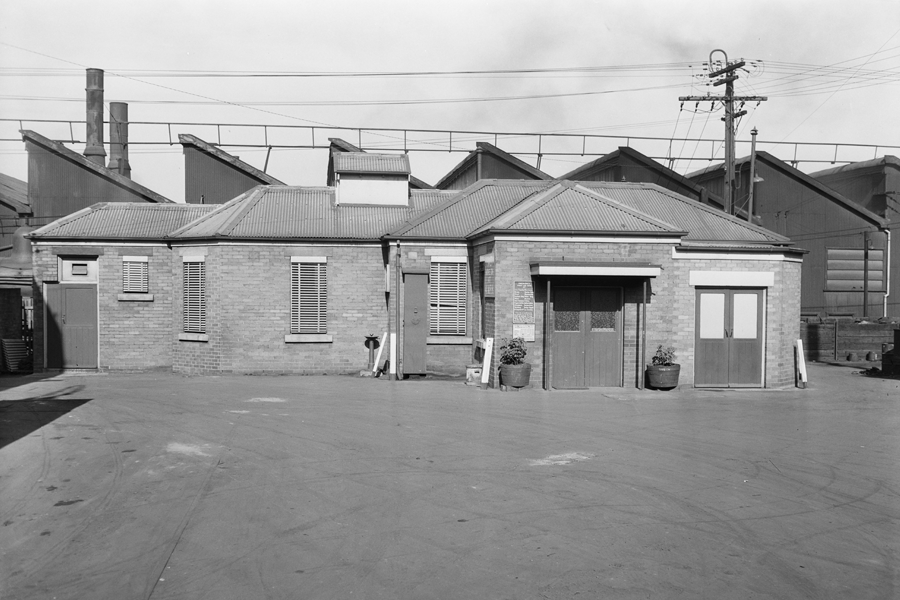Red Square
“Ambulance Square was Red Square because all the union meetings were held there and the union movement was pretty heavily into communist control. Actually most of the leading union bosses were Communist affiliated so, hence it became Red Square.” Jack Bruce, former Eveleigh worker

From its very establishment in 1887, Eveleigh was a highly unionised work environment, one whose unions, members, and workers would prove crucial to the growth of the Australian Labour Movement. No location at Eveleigh represented this fight for worker rights than the open concrete square between the First Aid building and the Locomotive Workshops, an area that workers came to refer to as “Red Square”.
Red Square was the principal location for smaller union meetings and worker walk outs, while larger union gatherings and talks generally took place outside the Workshops gates, in Boundary or Union Streets.
“…depending on the issue, it might have just been a small union structured meeting and might have 50-60 people show up. On the other hand it might end up being a major issue and you could have two or three thousand there.” Brian Dunnett, former Eveleigh worker
With a workforce of thousands, spread amongst numerous different buildings, bays, and trades, a common method of alerting workers to scheduled union meetings at Red Square was writing the details in chalk on notice boards around the site, or even simply in chalk on the floor in the middle of the Bays in the Locomotive Workshop.
In the late 1950s, an old carriage was even installed in the back of Red Square, used as a sort of headquarters by shop committees, where they would hold meetings to decide on industrial tactics, as well as produce and print the fortnightly shop committee newsletter Eveleigh News.
To Eveleigh workers, Red Square was more than just a simple concrete slab nestled between the First Aid Station and the Workshops; it was a representative part of the cultural landscape of work, labour and life that existed at Eveleigh. Red Square was a place for workers to unite on a daily basis in their constant battle for better conditions, further anchoring their social and political connections with one another and Eveleigh as a whole.
“I remember arranging an Ambulance Square meeting. A few dozen workers came out in their lunch hour... That kind of thing was way over and above just the ordinary economic demands for the workers on the job. But because we were a political animal, we saw that as highly important.” Hal Alexander, former Eveleigh worker
References
Taksa, L. (2005) “The Material Culture of an Industrial Artifact: Interpreting Control, Defiance, and Everyday Resistance at the New South Wales Eveleigh Railway Workshops”, Historical Archaeology, Vol. 39, No. 3, Landscapes of Industrial Labor, pp. 8-27
